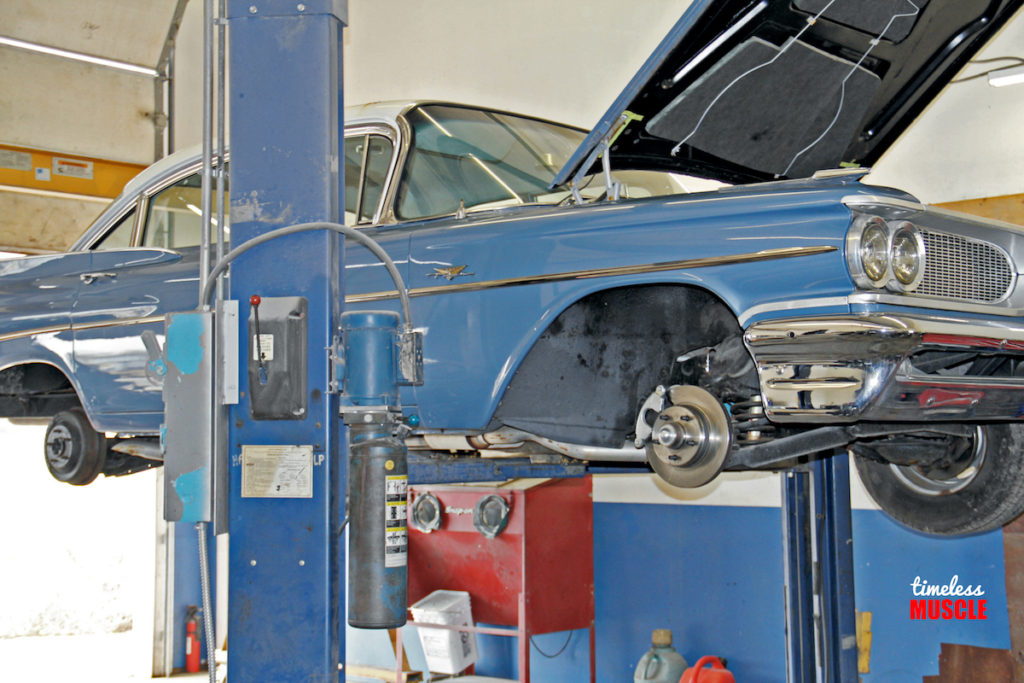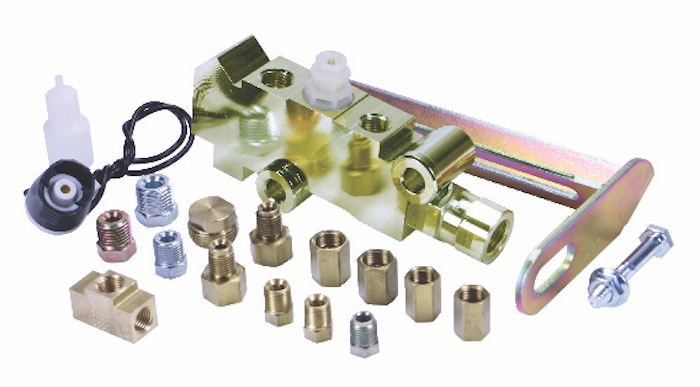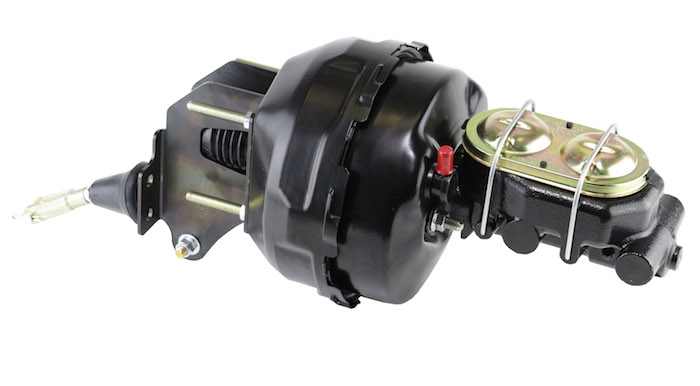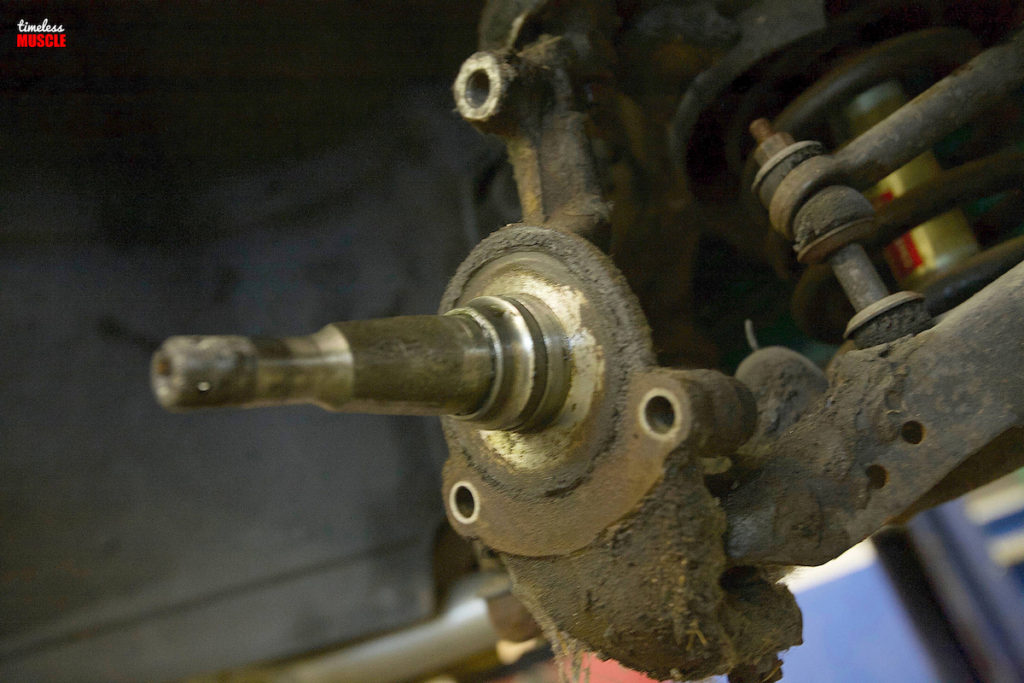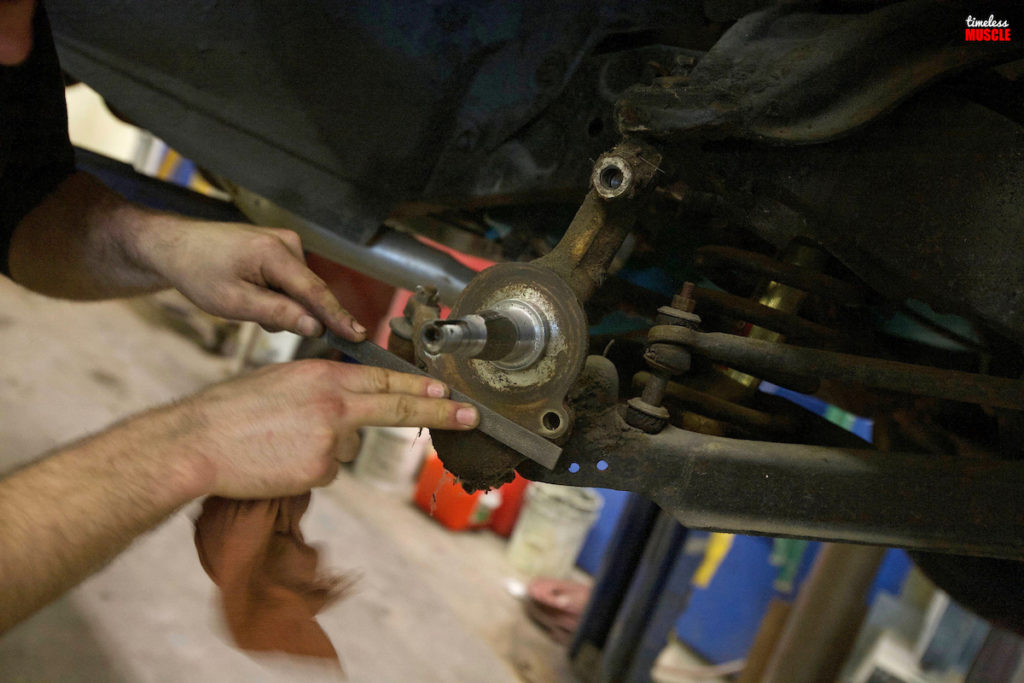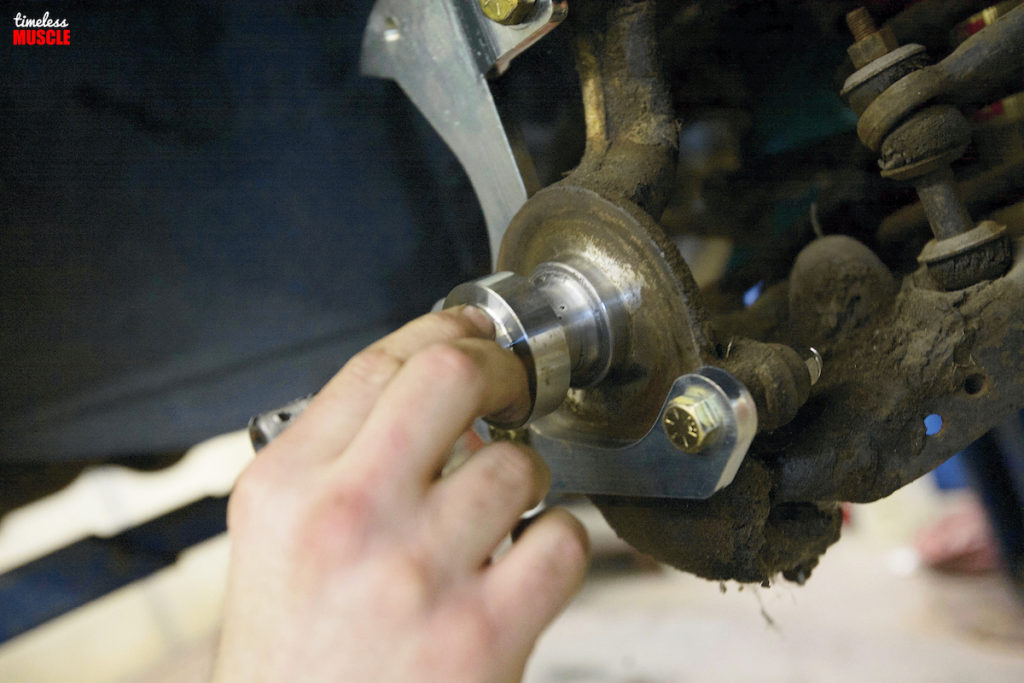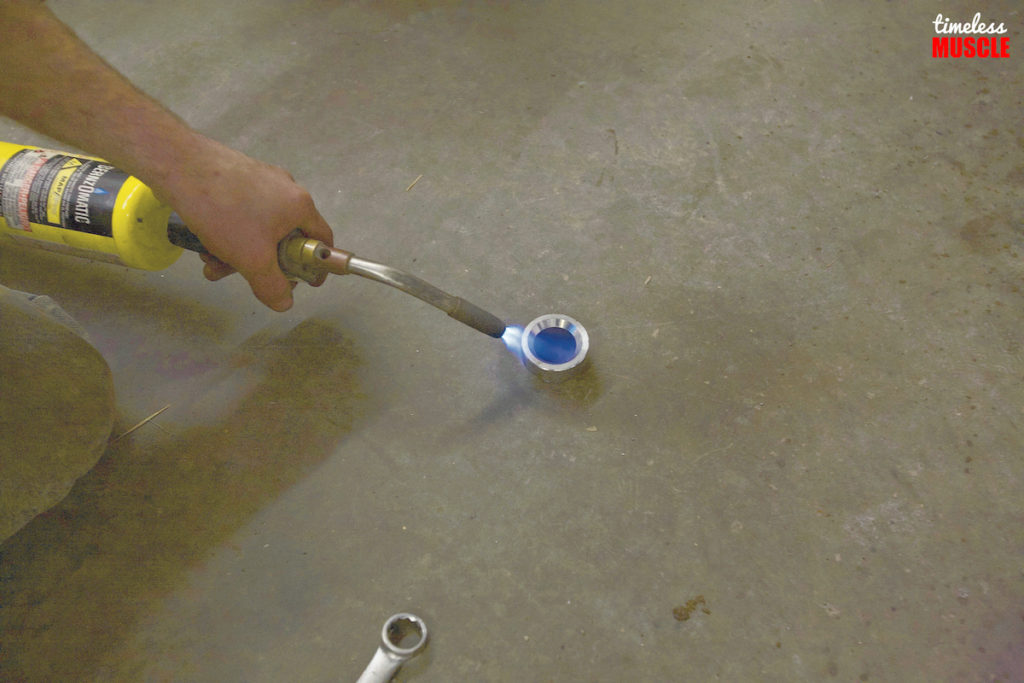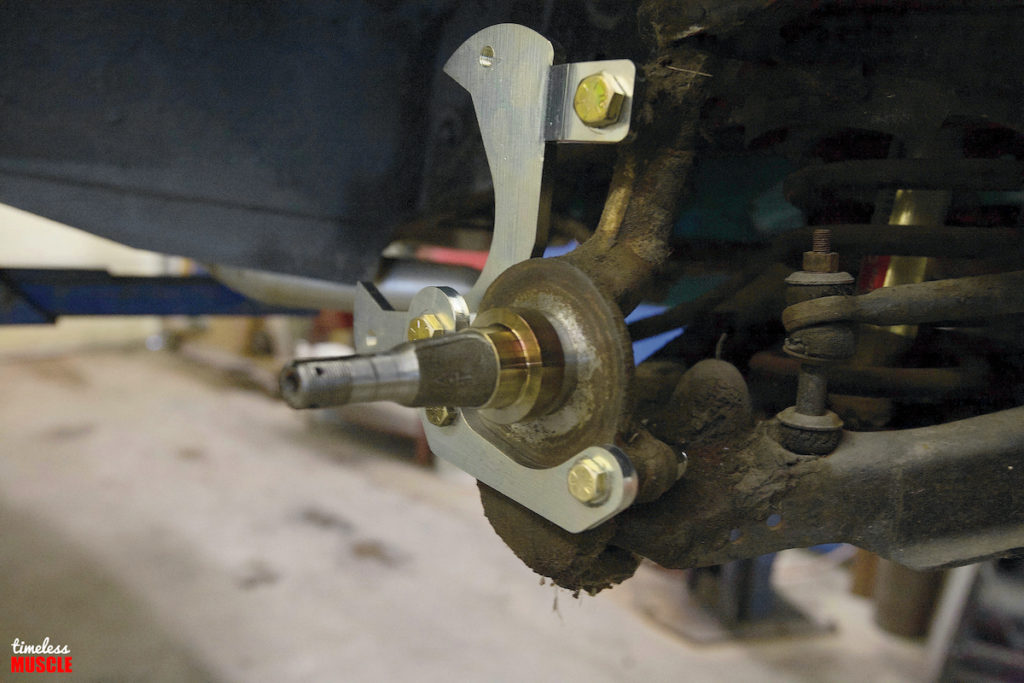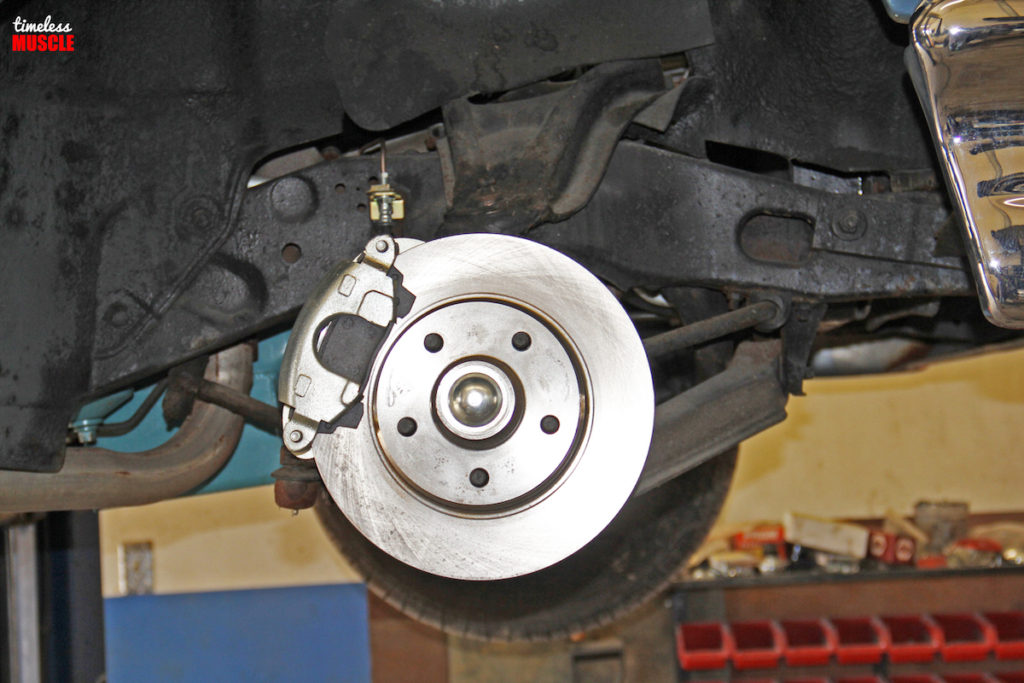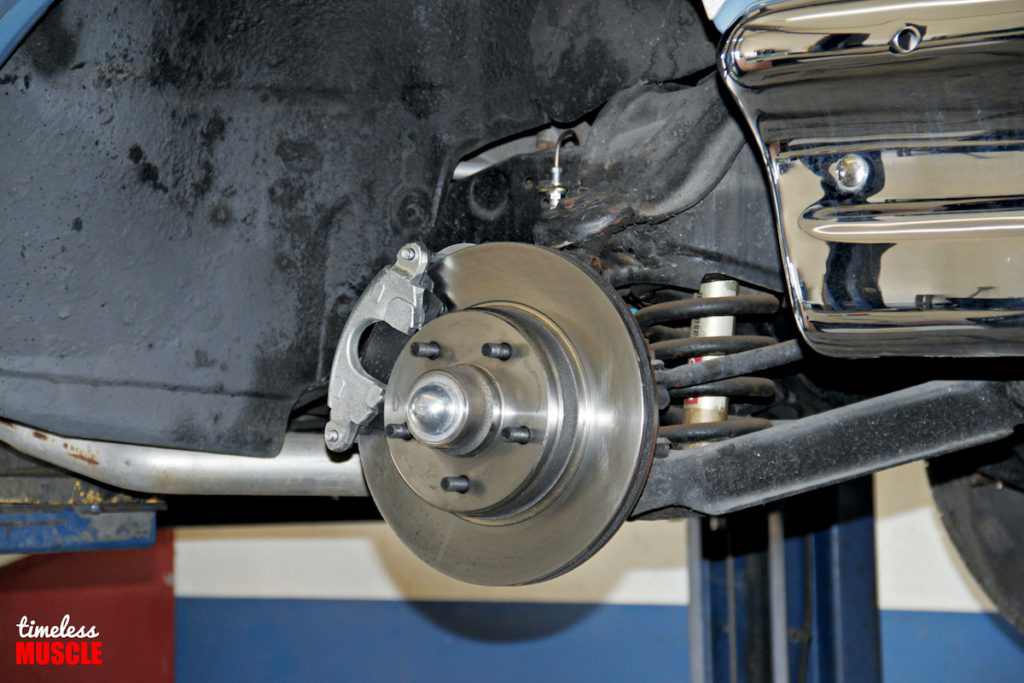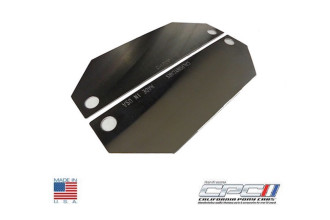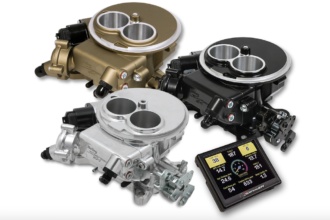photos by: Don Johnston, Master Power Brakes and Rick Seitz
Helping an Early B-Body Pontiac Stop with the Help of Master Power Brakes
*Editor’s Note: This story was complied as a joint effort with Poncho Perfection Magazine
What’s the first thing a fellow classic-car hobbyist tells you when you ask him about his classic Pontiac? The engine, right? “Oh it’s a 455 Super Duty with an 850-cfm carburetor, a Ram Air IV cam, factory headers … and enough torque to pull the teeth out of an elephant.“ (A Hemi elephant, that is!) But when it comes to the performance of the brakes … well there’s a subject that is sure to bring the bragging to a grinding halt.
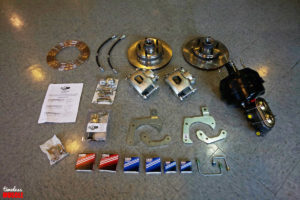
We ordered the complete front disc kit for our Bonneville, and it comes with everything you see here. It should be said the there are multiple versions of master cylinders just for the ’59 Bonnevilles alone, so it’s always best to perhaps pull the master cylinder and check what style of mounting hardware you have prior to ordering, as Pontiac elected to fit different variations of brake systems on their 1959 line of vehicles. We sheepishly made that mistake, so the actual master cylinder that is depicted here differs slightly than what was later fitted to the car. However, the proper master cylinder is found elsewhere in this story.
Back in the day, Pontiac’s high-torque engines had all the glory, but stopping those massive muscle cars was a dark, dirty secret that nobody really liked to talk about.
Do you remember when your Driver’s Education teacher told you to keep back two or even three car lengths for every five mph you were travelling between you and the vehicle in front of you? He said that for a reason– yesteryear’s drum brakes were slow, inefficient, and, in many situations, downright dangerous.
To compound matters, if you own a ’66 or earlier Pontiac, a loss of hydraulic pressure could cause your brakes to fail completely … all due to the design of the single master cylinder that was factory-issued from General Motors. How serious are we? Very! Mechanics old enough to remember referred to these single-reservoir cylinders as a “dead man’s can.”
Pontiac’s introduction of the dual-reservoir master cylinder in ’67 made all Pontiacs safer to drive and the optional front disc brakes introduced that year and in years since were a most-welcomed upgrade for those who could afford them. Still, drum-brake-only Pontiacs were available through 1974.
If you ever plan on turning the ignition key on your classic Pontiac and putting it into any gear (and who doesn’t?), then a master cylinder safety-upgrade is mandatory and a front disc-brake setup is highly recommended.
The folks at Master Power Brakes are experts at direct-fit Pontiac master-cylinder and disc-brake conversions. In fact, they started the hobby on its way to safer, quicker stopping over 33 years ago.
“Drum brakes were great when everyone else had drum brakes,” says Eric Waters, from Master Power Brakes. “Now vehicles have modern disc brakes and weigh less so they stop better. If you want to have peace of mind while driving your classic Pontiac in today’s traffic, then disc brakes are a MUST!”
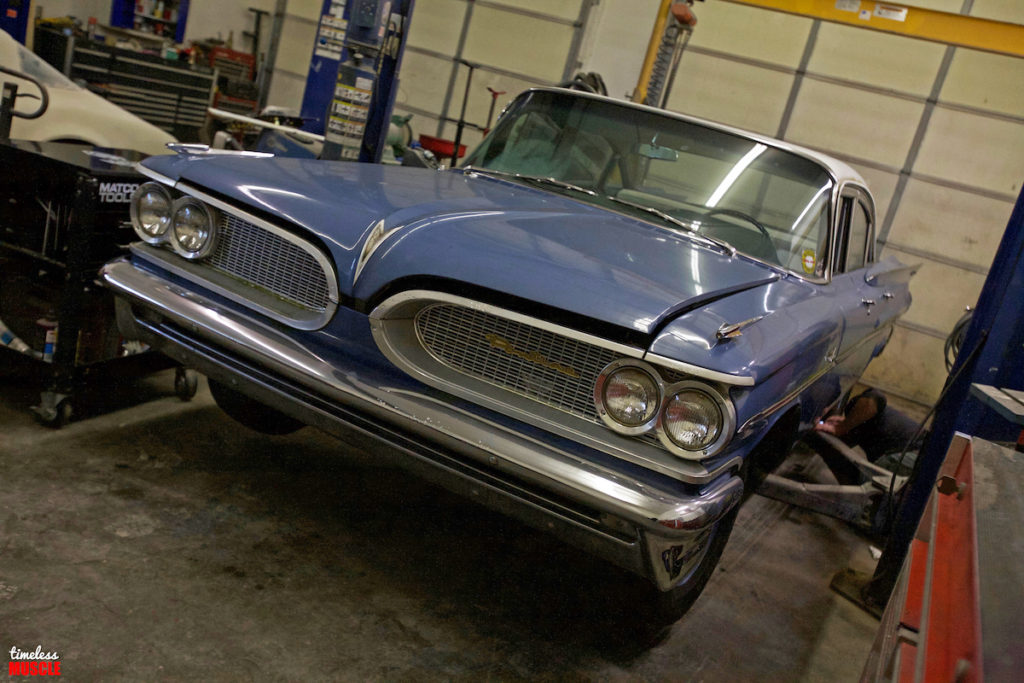
No, not even the 345-horsepower NASCAR-spec Catalinas like this one received disc brakes from the factory, but stopping one of these mighty road warriors these days depends on a top-quality master-cylinder disc-brake upgrade from Master Power Brakes.
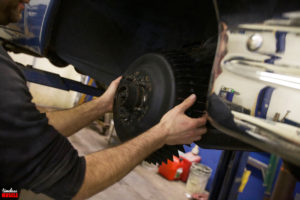
While we wanted to go full four-wheel disc on our big Cat, we first want o see what kind of benefits could be had from the Master Power front disc conversion. Remember, 90-percent of your stopping power comes from the front, so if the front disc upgrade from Master Power could satisfy our stopping needs, we would first have to put them to the test.
As we were working on a high-horsepower upgrade on our NASCAR 389 Catalina, we asked Eric what he’d suggest to improve the safety and stopping power of our 4,000-lb. Poncho.
“Our complete power system in our Legend Series is perfect for this Pontiac set up,” he said. “Not only does it include the more modern front-disc-brake components that install on the factory drum spindle and a booster/master assembly, but also includes the correct combination valve for the system. Everything you need is all in one SKU number.”
We took Master Power Brake’s advice on “better safe than sorry.”
A few days later, a professionally packed upgrade kit arrived at the front door of DCI Motorsports in Atwater, Ohio. Pontiac specialist Don Johnston was eager to direct the installation, and with his extensive drag-racing experience, we knew we had the project in the hands of a great Pontiac guy.
Follow along as DCI Motorsports installs Master Power Brakes disc-brake and dual-master-cylinder upgrades on our Catalina.
Safety vs. Originality: The Top Three Mistakes Enthusiasts Make (A primer from Master Power Brakes)
- Classic car owners not wanting to upgrade to disc brakes.
Classic-car owners want to keep their rides original with the OE drums yet want to drive in today’s traffic conditions. It’s unfortunate, but all too often we hear from consumers who say their car is in the body shop getting a whole new front end due to a car pulling out in front of them and they just could not stop. If you want to enjoy driving your car you have to update its brakes.
- Hobbyists trying to piece a kit together to save a few bucks.
They buy a booster from eBay, a master at a local auto-parts store and then rob parts from a junk yard, drawing a conclusion that they have just saved a lot of money. Most do not realize that all the parts have to be matched together in not just fitment, but also function. You need the correct pedal ratio to operate the correct booster with the correctly set booster pin to operate the correct bore/stroke master cylinder. This all has to push fluid through the proper valving in order to generate adequate pressure. The clamping pressure to the rotor is then dependent on the size caliper/piston that you’re operating on the correct thickness rotor. Customers who try to piece a kit together or go for that “cheap” price end up spending at least two to three times what they originally tried to save.
- Consumers do not read the instructions thoroughly or will not give us a call with questions.
We are here to answer questions from when they first start looking to purchase a disc-brake system all the way thorough the installation process. A few extra minutes reading all the instructions or a 5-minute phone call could save them an hour or two during the installation. Our goal is to improve the stopping power of your classic vehicle so you can have confidence and reassurance when driving it in today’s driving conditions.
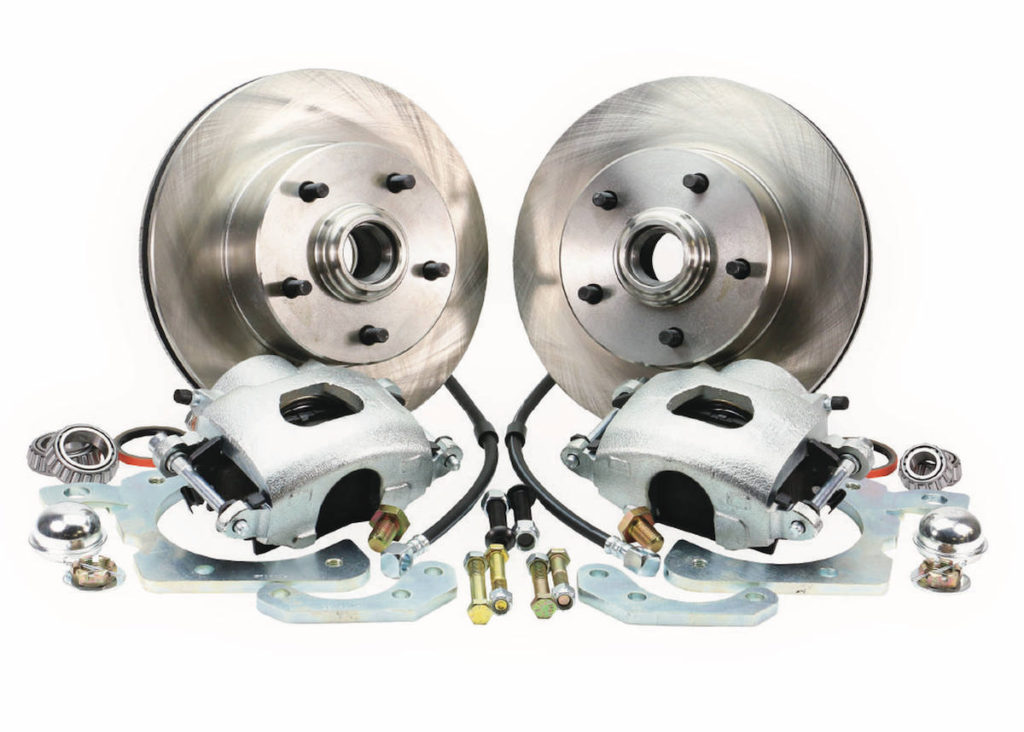
The Master Power Brakes kit is a complete and cost-effective solution for upgrading your front drums to a safer and better-performing disc brake system. Kits are available for most drum brake-equipped Pontiacs, including our 1959 389/345-horse Catalina four-door sedan. Now the big Cat will stop as well as it goes.
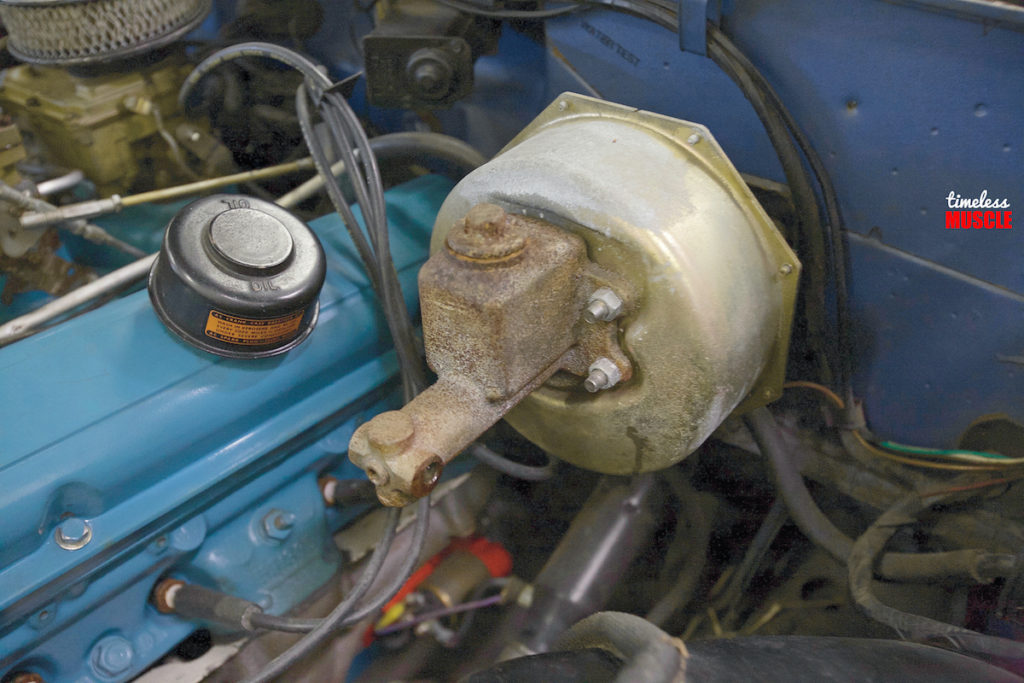
The OE master-cylinder setup features a single master and very unsafe one-line setup. If you have a Pontiac from 1966 or earlier, your setup is likely very similar to this one. If something should happen to this master, such as a leak, we would lose all braking power and that’s something we’d never want to happen.
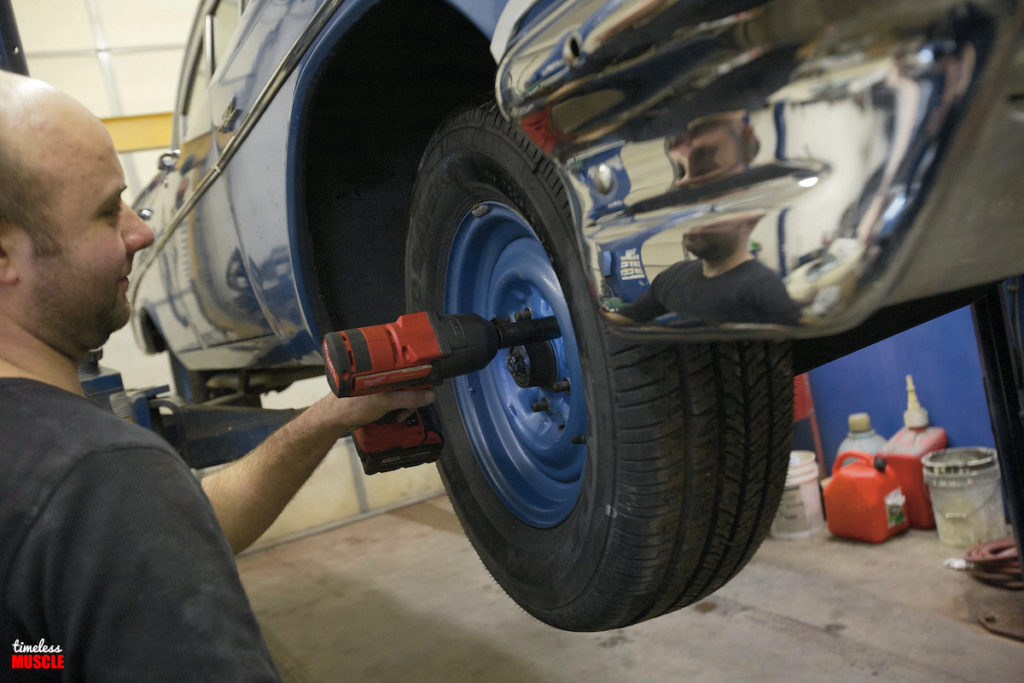
Master Power Brakes’ disc-brake conversion kits require a minimum of 15-inch rims for proper caliper clearance. Removing the stock steel wheels on this Poncho sets the project in motion.
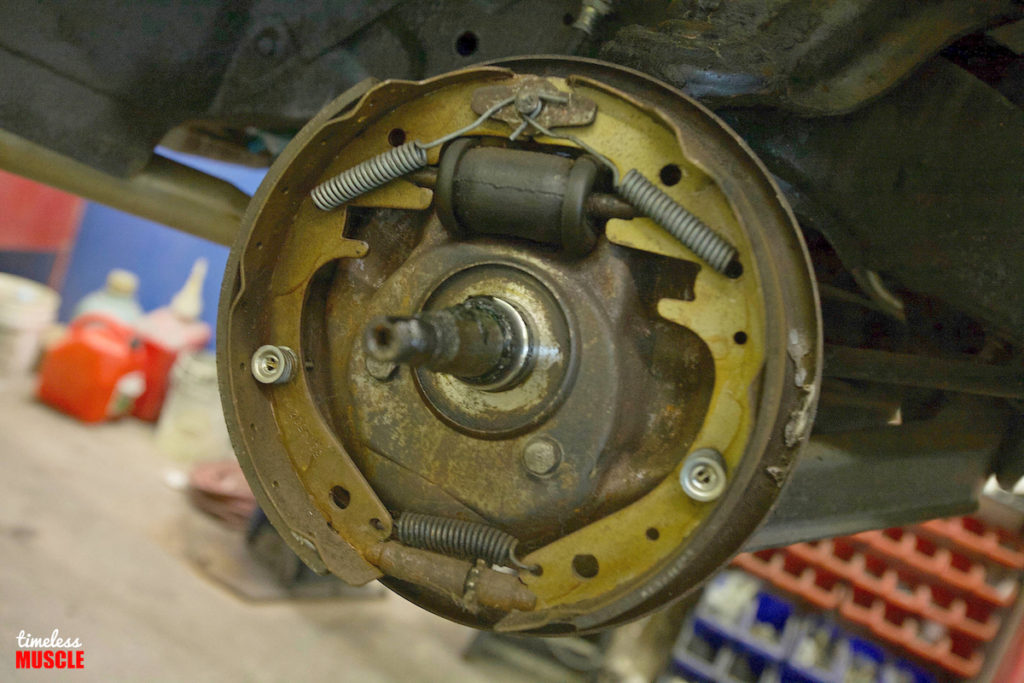
With the OE drum cover set aside, we get a close-up view of the outdated braking system. Just imagine how hot it gets inside the drum area and all that caked up brake dust. The new disc brakes dissipate heat better and they will wear longer compared to drum pads.
It is vital to clean the years of road grime and brake dust off the factory spindle. Smooth out any imperfections such as OE burrs in the spindle or stubborn grime that will not rub off. This will ensure the new brackets will mount flush to the spindle. It is also the perfect opportunity to inspect your spindle and address any stress cracks that could have occurred over the past 40, 50 or even 60 years.
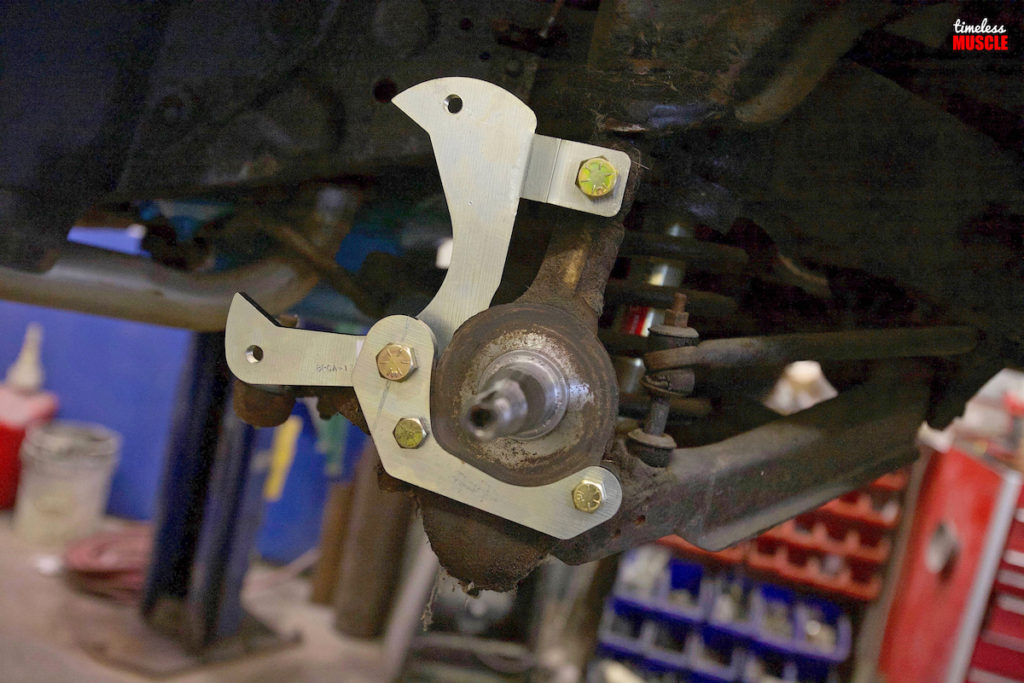
The quality alone in the Master Power Brakes’ heavy-duty, laser-cut brackets reassures us of the great braking we will have after we are all finished. Here we mock up all the brackets to the OE drum spindle with the included grade-8 hardware.
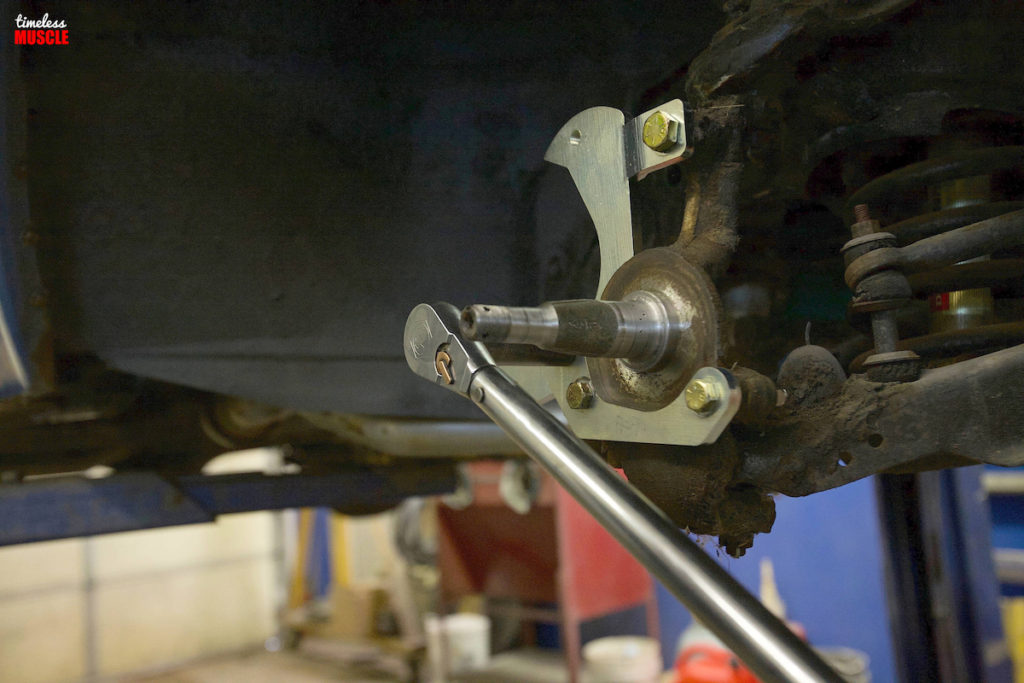
Be sure that after you have done your test fit, you use a small amount of Loctite on the hardware bolts and properly torque.
The spindle-bearing adapter is next and may require applying some heat in order for it to fully seat. This is common in several of Master Power Brakes’ kits. The bearing adapter is not supposed to move at all once on the spindle so it has to be a tight fit. A little heat from either a torch or an oven will expand the metal. This will allow it to slide right on the clean spindle. Once cool, the spindle adapter should be tight on the spindle and ready to receive the new rotor/bearing set up.
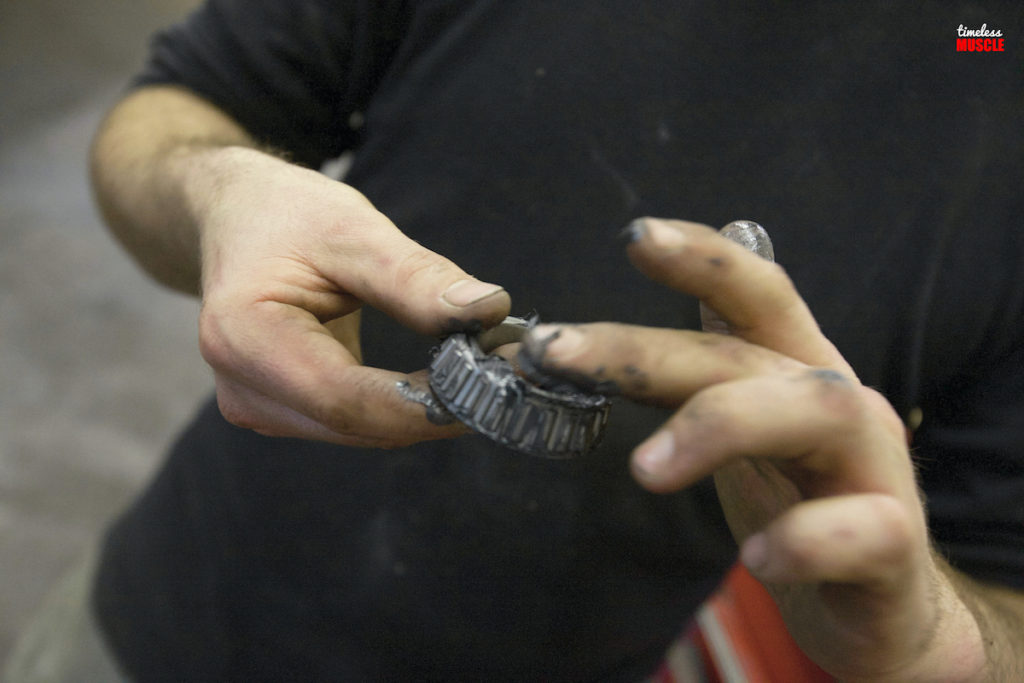
Master Power Brakes includes all new bearings and seals for the rotors so that saves a trip to the local parts store. Be sure to properly pack the bearings using performance synthetic grease. Cheap grease can cause bearing failure and incur a lot of damage to your new disc-brake kit and factory spindle.
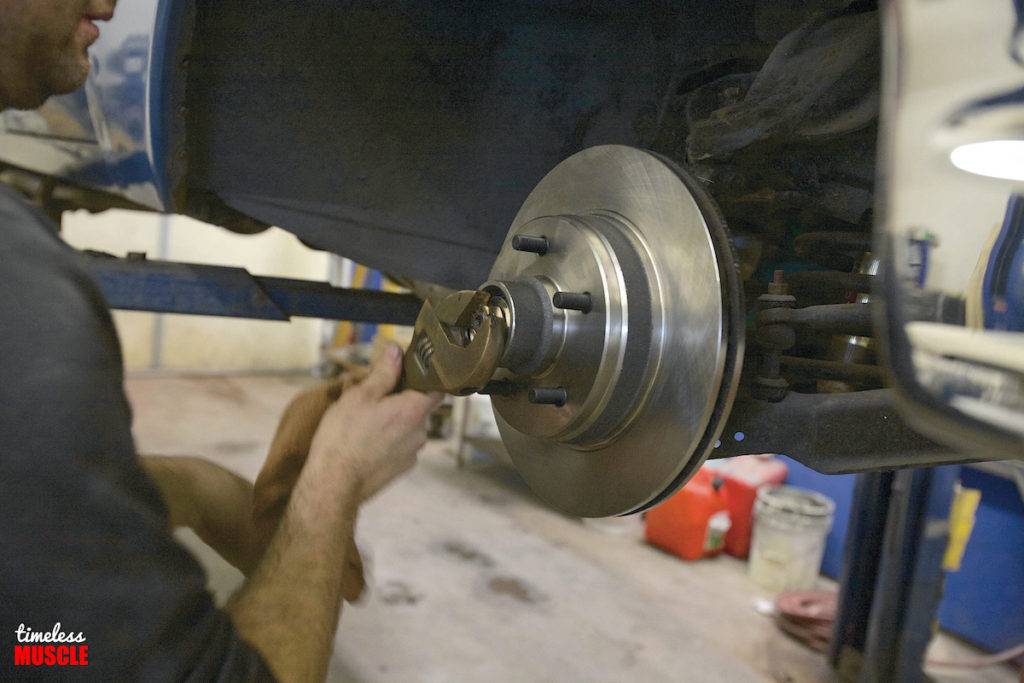
Properly seating the rotors is a very important step and one overlooked by some first-time installers. We spin the rotor while tightening the castle nut, thus causing the rotor to stop spinning; and repeat this process about three to four times. This makes sure all the grease gets down into the bearings.
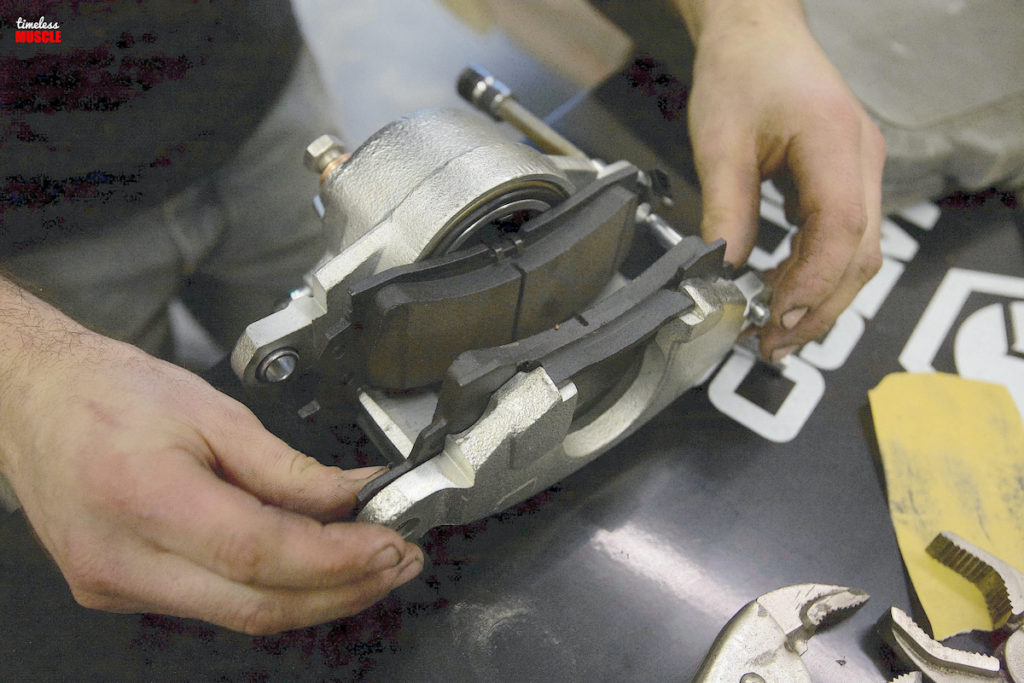
With the rotors installed, it is time for the large GM calipers to be installed. They feature OE stainless-steel-sleeved, 2 15/16-inch diameter pistons and include premium brake pads. Brake-pad replacement was a question we had and we’re sure you’ll have at some point. Master Power does have pads for sale separately, yet they assured us that we could go to any local parts counter and obtain new pads when the time came.
- The final installation looks fantastic — and brings a touch of modern capability and aesthetics to the car.
- Once these front discs and calipers will clear the original wheels, and will be completely hidden from casual onlookers and concours judges at some of the most fickle car shows.
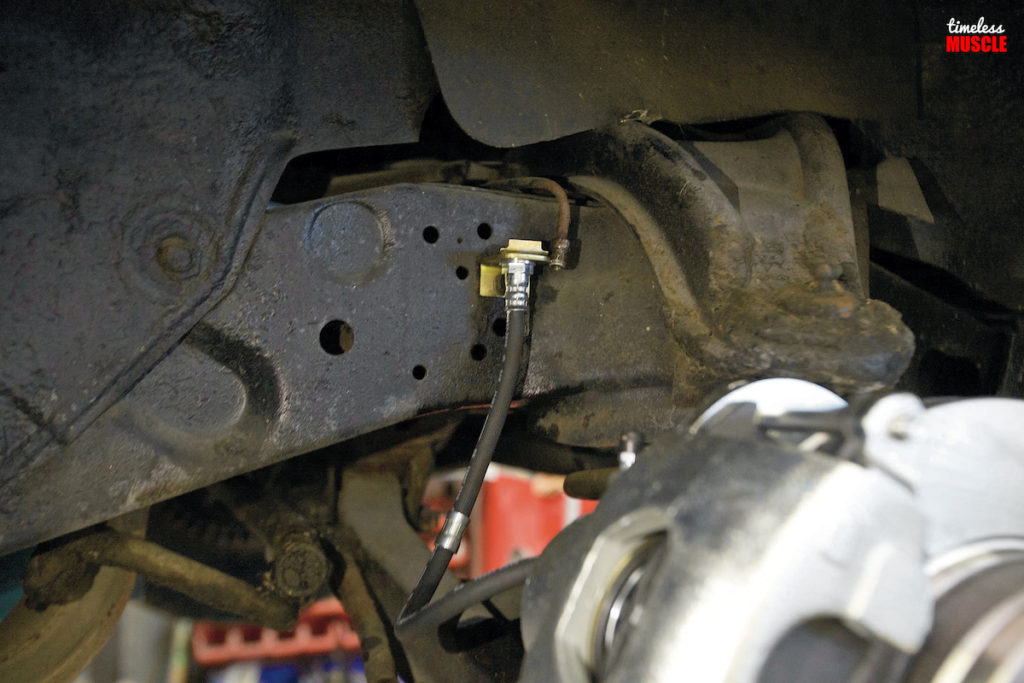
Master Power Brakes really means it when they say their kits are complete. They included new flex lines, along with new frame-hose clips, banjo bolts and crush washers.
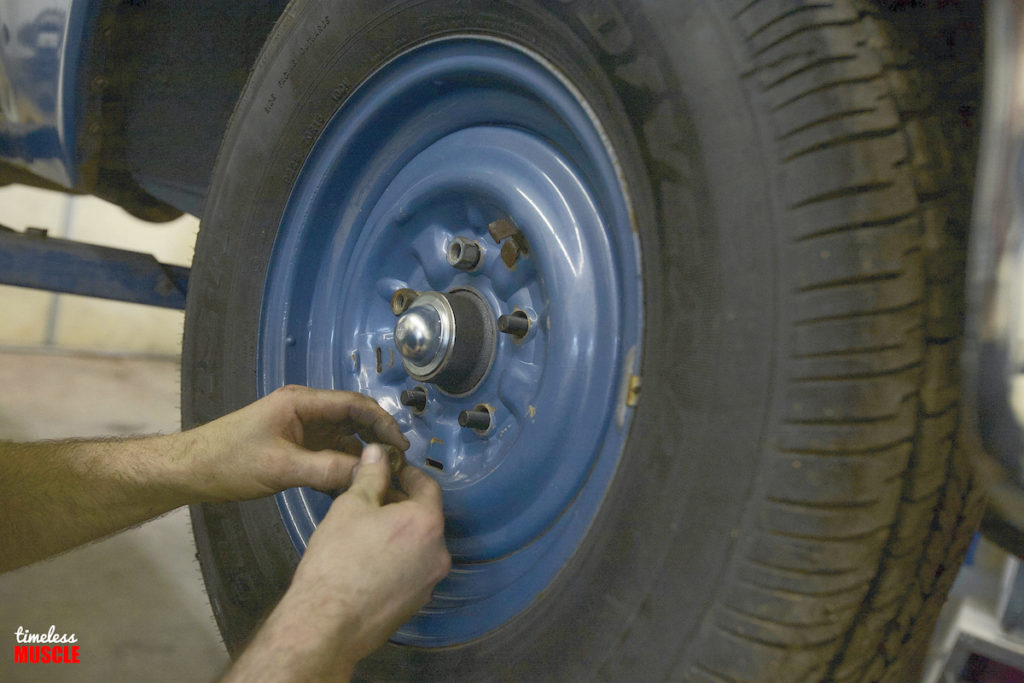
When we put the factory drum wheels back on, we noticed that the wheel diameter was fine, however the back of the wheel face slightly rubbed the outer portion of the caliper. Master Power Brakes does offer CNC-machined billet spacers so a pair of ¼-inch spacers took care of this issue with no problem.
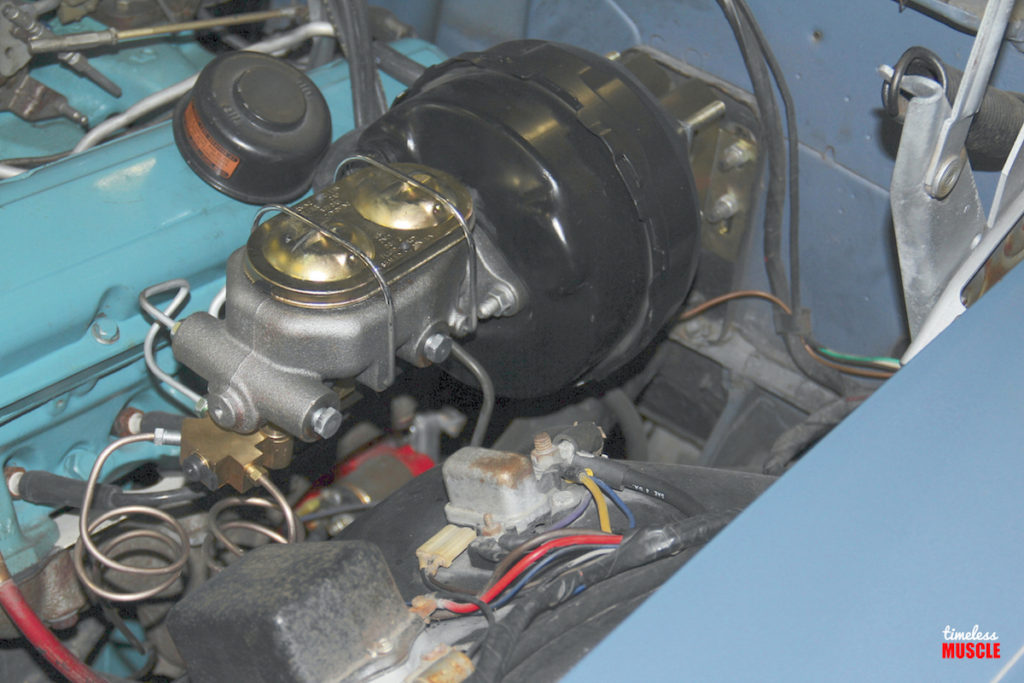
Installing the new master-cylinder setup was a cinch. We won’t show you the step-by-step here, but see how great it looks in this big Cat’s engine bay.
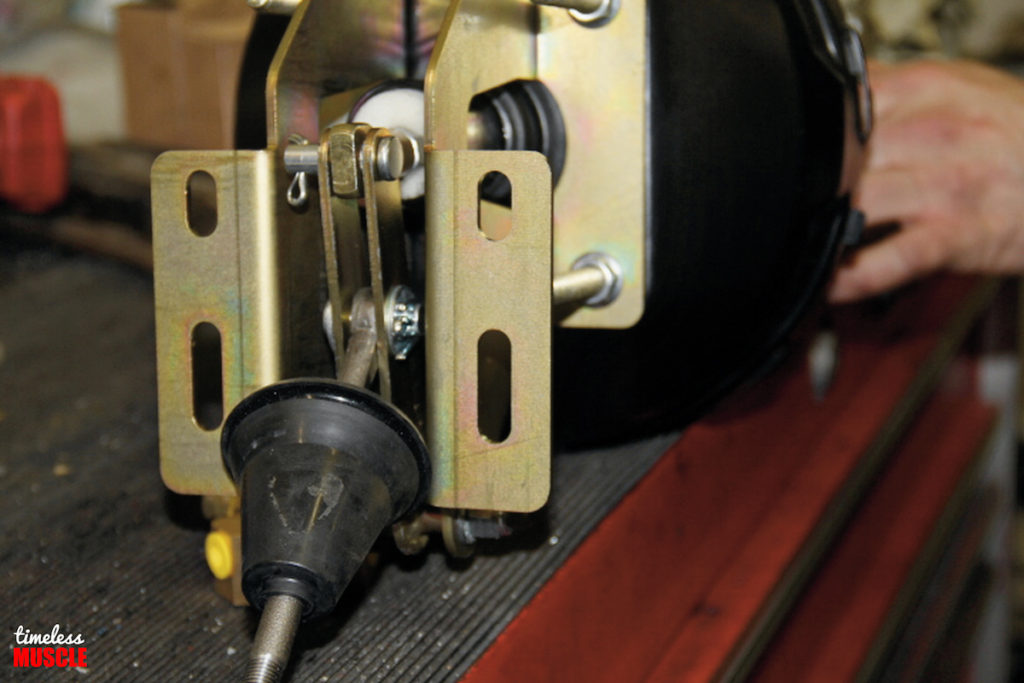
A properly engineered bracket is paramount in maintaining proper pedal ratio. We can get into a whole other article on just pedal ratio. To summarize, power-brake systems need a 4-to-1 ratio and manual needs about a 6-to-1 ratio. If the pedal ratio is not correct you will either not have brakes or your brakes will be so touchy that you will lock the wheels up every time you hit the brake pedal.
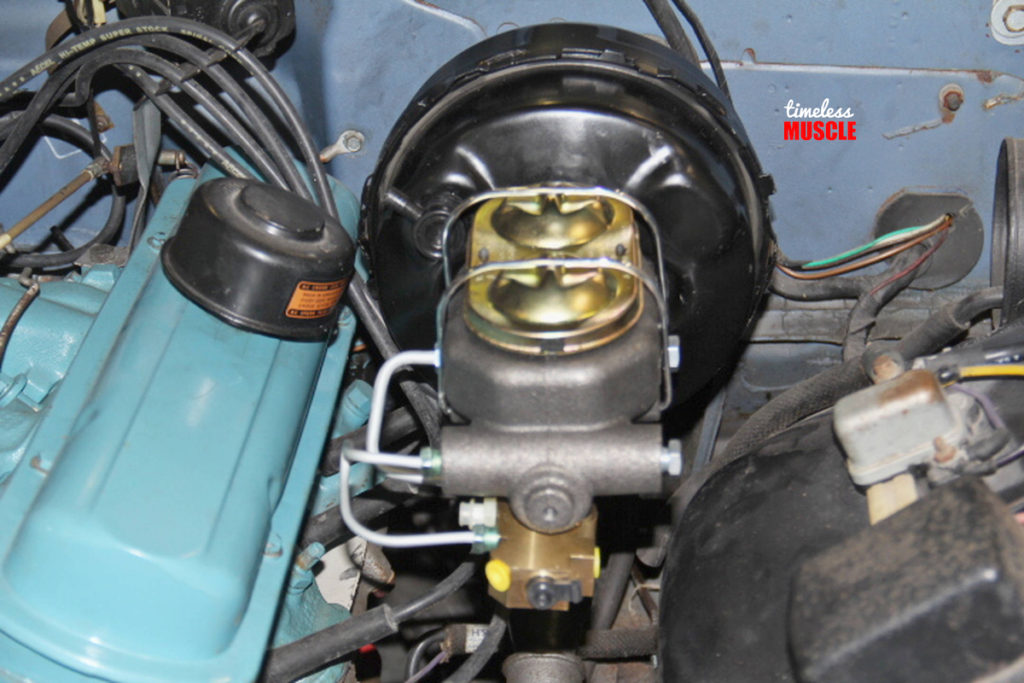
With the new booster and master installed, you can see everything clears the factory valve cover and inner fender. The valve kit came with a mounting bracket and the lines to connect the valve to the master cylinder so that saved us time and the labor of making them. Be sure to use the included bleeder alignment tool from the valve kit as it keeps the valve centered while you bleed the system. A tripped valve while bleeding will prevent a full bleed of the brakes.

A long-time Pontiac fanatic and former Editor-in-Chief at High Performance Pontiac Magazine, Chris Phillip lends his expertise to Timeless Muscle Magazine in a big way!








